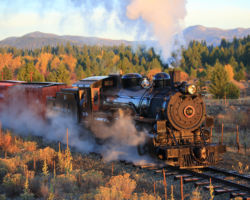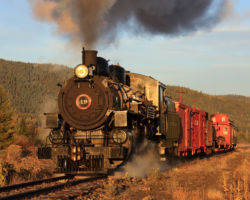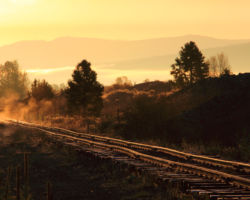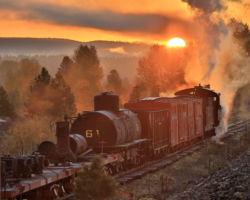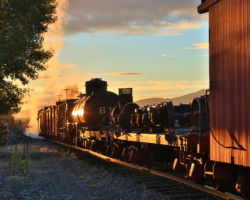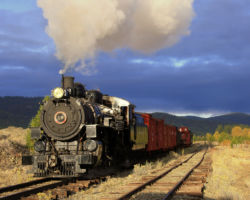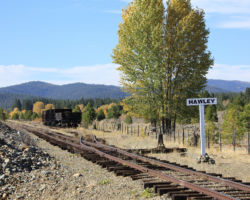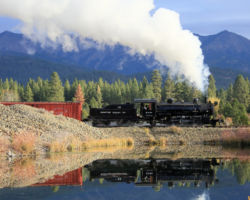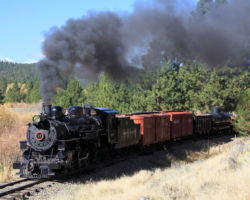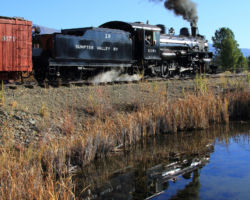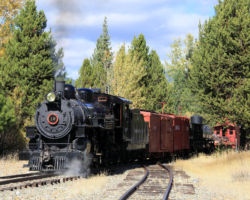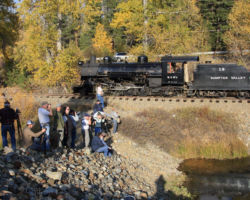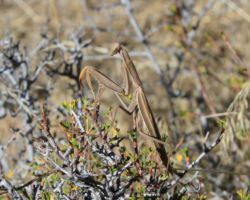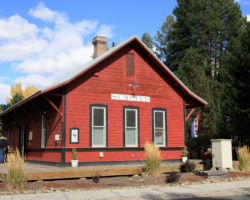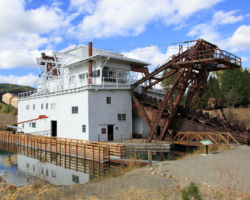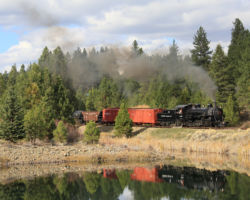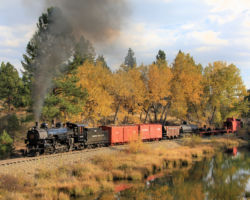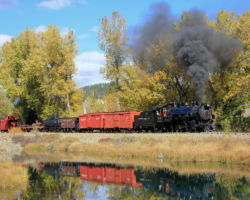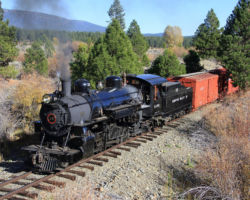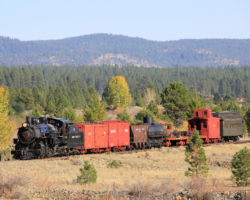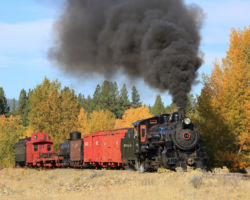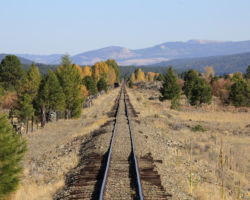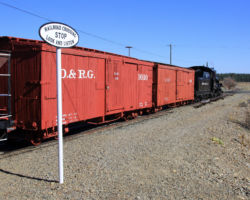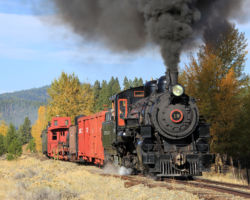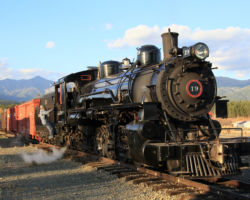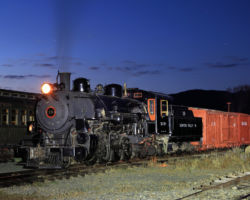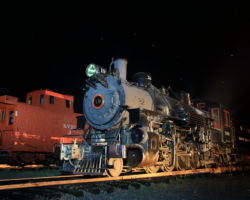On the weekend following the trips on the Chelatchie Prairie and the Oregon Coast Scenic in 2014, the Sumpter Valley Railway held their two day Fall Photographers’ Weekend. The previous Lerro trips were coordinated so that folks could also make it to the Sumpter trip, and many of us did, although the events weren’t officially connected.
I flew into Boise, ID, the weekend before and drove out to the Chelatchie and OCSR so that I could hit the Sumpter’s Photo Weekend on the way back. That allowed me to drive back to Boise on Sunday after the trips were done, and then fly out in the wee hours on Monday in time to be back in the office that same morning. The joys of still being a working stiff, eh?
A Quick History
For those unfamiliar with the Sumpter Valley Railway, the line was founded in 1890 to haul timber from the mountains to the west into the Oregon Lumber Company’s mill in South Baker City, OR. Starting in 1890, the Sumpter’s 3-ft gauge main line would slowly grow westward in a series of extensions over the next two decades. The route reached its ultimate ~80 mile length when the final extension was built into Prairie City, OR, in 1910. It wasn’t just a logging railroad. As a full-fledged common carrier, it had passenger service and found traffic from other industries that popped up along the line, including some gold mining and smelting around Sumpter and livestock being shipped from Prairie City. The line’s bread and butter would always remain timber and finished lumber products, however. Passenger service ended in 1937, and freight declined in the 1930s and 1940s. Prairie City to Bates was abandoned in 1933, but the rest continued to operate until abandonment in 1947. (A small 1.5 mile segment continued to operate in South Baker until 1961 as an in-plant railroad for the mill.)
In 1971, with the mainline gone for only 24 years, a group of volunteers got together and sought to recreate part of the SVRy between McEwan and Sumpter. I won’t bother retelling the story here – the railroad’s own history page has a very good summary. The short version, however, is that this tenacious group of volunteers has managed to rebuild ~6 miles of mainline, in addition to shops and station facilities, as well as acquire and restore a remarkable amount of Sumpter Valley and other narrow gauge equipment.
The Photographers’ Weekend – Oct 18-19, 2014
The weather for both days was cold and crisp under clear skies, except for some light clouds the first morning. As is typical in the mountain west, it didn’t stay cold once the sun was up and warmed up nicely during the day. Both days the train was the same – Sumpter 19 in the lead, two boxcars, a hopper, a tank car, two flats, an SVRy caboose, and original 1890 SVRy coach #20 on the rear to haul us around.
We’d start at McEwan pointed east, back the train to various points doing morning shots – primarily on the first couple miles of track. Most of the first two miles of the line line is cut through old dredge tailing rows along the Powder River. Three dredges worked these river bottoms between 1912-1954, scooping up river bottoms rich with gold and depositing the remains back in these barren parallel rock piles. (One dredge is now restored as a museum in Sumpter – the rotting wooden remains of at least one of the others can be seen in one of the ponds.) Between the piles lies absolutely still water, which we made ample use of for reflection shots.
Around noon, we’d head back to McEwan, water and service the engine, wye the train, and head out again pointed into the afternoon sun. For the most part, the afternoon shots were on the western part of the grade, nearing Sumpter. This part looks a little more like normal narrow gauge railroad and a little less “gunbarrel through the rock piles”. There’s actual curves and trees and other such scenic elements, adding a bit of variety.
On Saturday night, we did have a quick night shoot with #19 at the McEwan shops. Nothing fancy, only a couple shots, but nice to get some steam after sunset.
The photos are in a rough “time of day” ordering, with Saturday and Sunday blended together. Since the two days were so similar, it made some sense to mesh them into one. Enjoy!
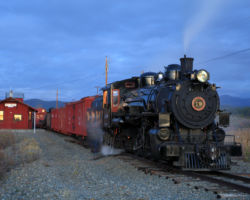
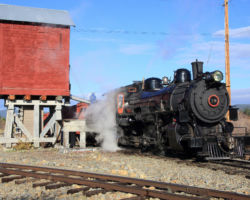
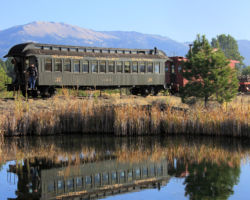
Thanks to all the Sumpter volunteers who have contributed the countless thousands of hours and dollars to bring this railroad back from the dead and turn it into a hidden gem of narrow gauge preservation. It’s a little far out there for me to visit regularly, but I fully intend to return in the coming years.
Everything here was shot with a Canon 5D Mark III and either a 28-300mm f/3.5-5.6L or 24-105mm f/4L lens.
This work is copyright 2024 by Nathan D. Holmes, but all text and images are licensed and reusable under a Creative Commons Attribution-NonCommercial-ShareAlike license. Basically you’re welcome to use any of this as long as it’s not for commercial purposes, you credit me as the source, and you share any derivative works under the same license. I’d encourage others to consider similar licenses for their works.
